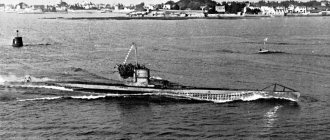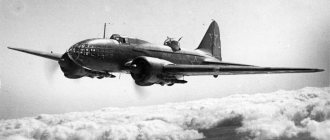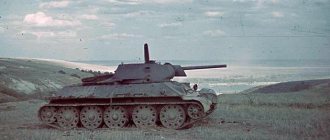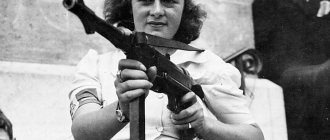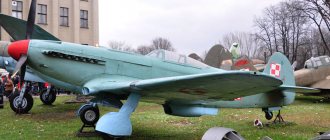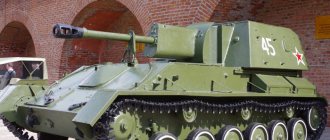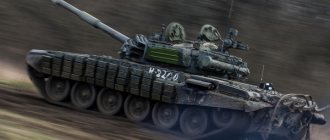Reinhard Scheer's cunning plan
On the same topic
Positional deadlock: a nightmare from the First World War
By May 1916, the war had gone on long enough for both sides to realize the depth of the positional impasse that had developed in the land theater of operations. This deadlock was, of course, unpleasant, but on the whole it worked for the Entente - it was stronger industrially and sooner or later would have won the war of attrition.
The British naval blockade played an important role in it. It could be removed only by seizing supremacy at sea. This was a serious problem - the English Grand Fleet was significantly stronger than the German High Seas Fleet. But the Germans still had the opportunity to inflict sensitive blows on him, smashing the enemy piece by piece.
And Admiral Reinhard Scheer, commander of the High Seas Fleet, had a plan for how to do this.
The idea was simple and not exactly new - take a group of fast ships and raid one of the British coastal cities. The British will most likely send some forces after her - quite representative, but unlikely the entire Grand Fleet. And then a surprise awaits them - the main forces in the form of the remaining ships of the High Seas Fleet, which will follow 50 miles behind.
Admiral Scheer
The Kaiser's sailors had already carried out raids on the coasts in the First World War - but on a smaller scale. Now it's time to play big.
Battle of all times
On May 31, 1916, the greatest naval battle of the First World War took place - the Battle of Jutland. It involved the forces of the navies of the British Empire and Germany, a total of 250 ships, including more than 40 battleships and battlecruisers. Our colleagues from the portal worldofwarships.ru talked about this event in 2016, on the centenary of the battle. Let's remember with them how it was.
Starting positions
In the late spring of 1916, the naval confrontation between the British Empire and Germany finally reached a dead end. Having undivided dominion at sea, the British Grand Fleet did not at all seek to impose a general battle on the German forces, but only suppressed any of their attempts to break through the long-distance naval blockade. Despite the passivity of such tactics, economic isolation was draining Germany, and the need to break the blockade became increasingly urgent.
Admiral Reinhard Scheer, who took over as commander of the High Seas Fleet in January 1916, decided to shake up the stalemate. His plan was to lure the Grand Fleet out of its protected bases with a relatively small force of battlecruisers and then destroy it piece by piece.
The first stage of the operation was rather unsuccessful for the German fleet. The formation of submarines failed to collect valuable intelligence data and batter the Grand Fleet, while the British, on the contrary, intercepted a message about the German fleet going to sea and prepared for a possible battle. Based on radio interception data, the English fleet in two squadrons headed to the expected location of German forces. The first of these was the vanguard of six battlecruisers, light cruisers and destroyers of Admiral Beatty, accompanied by four dreadnoughts of Hugh Evan-Thomas. Most of the rest of the Grand Fleet, under the command of Admiral Jellicoe, advanced to the proposed rendezvous from Scapa Flow.
First stage
On May 31, at about 14:00, at a point west of the coast of Jutland, Beatty's force met Admiral Hipper's squadron of five battlecruisers and several escort destroyers, which, as the British later found out, was in the vanguard of the main forces of the High Seas Fleet. Seeing their clear numerical superiority, the British ships approached and opened fire on the enemy. In response to this, Hipper, acting according to the original plan, turned the squadron south to bring the enemy to the main part of the German fleet.
The artillery duel during the pursuit was unsuccessful for the British ships, despite their numerical superiority. Not only the depressingly low quality of ammunition made itself felt, but also negligence and even gross errors in the management of the squadron. There was confusion in the distribution of targets and fire control, and due to communication problems, many orders were transmitted with serious delays. It was because of this that Evan-Thomas’s battleships did not have time to change course in time following the German ships leaving for the southeast and entered the battle very late.
Quite soon, Hipper’s ships were able to take aim, and the first hits began: in a short time the battlecruisers HMS Indefatigable and HMS Queen Mary were hit and sunk. In response, Beatty launched his destroyers on the attack, which approached Hipper's squadron and entered into a short but inconclusive battle with the German destroyers.
At about 16:30, Admiral Scheer's ships arrived at the battle site. Unexpectedly, having stumbled upon superior enemy forces, Beatty turned the English squadron around and moved towards the main part of the Grand Fleet. And again, due to interruptions in communications, Evan-Thomas’s battleships began the maneuver very late and, at the turn, successively came under heavy fire from German forces.
Second phase
During further pursuit during an artillery duel, the British lost the battlecruiser HMS Invincible and the armored cruiser HMS Defense, and the German fleet lost the light cruiser Wiesbaden. At 18:20 the main forces of the enemy collided. Admiral Jellicoe's ships quickly joined the battle and concentrated their fire on Scheer's battleships, which were in pursuit at the head of the German armada. The balance of power changed sharply again: Admiral Scheer did not expect a meeting with the main forces of the Grand Fleet and, under the cover of smoke screens, made a “combat turn” and tried to break away from the British.
Expecting to go behind the stern of the English battleships and break through to the bases, Scheer soon turned the squadron again and headed east, but already at about 19:00 a new combat contact occurred. After a short skirmish, which for the German forces resulted in serious damage to the battlecruisers Von der Tann, Seydlitz and other heavy ships, the High Seas Fleet again tried to escape from the enemy. In the ensuing twilight, Scheer's formation managed to break away from the British pursuing him.
Heading southeast, the High Seas Fleet took the shortest route to its bases. Although each side had a very vague idea of the location of the enemy forces, at about 22:00 the routes of the fleets crossed. The light cruisers of both squadrons entered the battle, and an hour later the German fleet began a fleeting battle with the British destroyers that were at the tail of the Grand Fleet. Fortunately for Admiral Scheer, the British fleet was not prepared for a night battle. Confused by conflicting intelligence, Jellicoe did not realize that the High Seas Fleet had slipped astern of his ships. The pursuit of the German fleet continued throughout the rest of the night. Admiral Jellicoe decided to stop the pursuit only on the morning of June 1, having received a radiogram from the Admiralty that the High Seas Fleet had apparently returned to its home harbor.
Outcome of the battle
It is difficult to judge unambiguously the results of this grandiose and incomparable in scope battle. Although the Grand Fleet suffered serious losses, almost twice the German tonnage, the High Seas Fleet failed to fulfill its main task - to break the economic blockade. Until the very end of the war, German ships no longer dared to stray far from their bases.
But the formal victory also came at a high price for the British. The British public was extremely disappointed by the high losses of their fleet, which for many years had the reputation of being an impeccable and invincible military machine. The prestige of the entire Admiralty was undermined for a long time, and the British Navy managed to restore its shaky reputation only at the beginning of World War II.
Andrey Maleev
/
Ships that survived the Kaiser and the Fuhrer
History of the German battleships "Schleswig-Holstein" and "Schlesien"
- WWII
- fleet
- Germany
Mikhail Plets
/
The last days of Hochseeflotte
On June 21, 1919, in Scapa Flow Bay, the main base of the English navy, ships of the German High Seas Fleet were scuttled by their crews.
- WWI
- Germany
- Great Britain
Warspot Editorial
/
Warspot Songs: From Tipperary to Wilhelmshaven
The story of how a new version of an old song could fit into a cult film
- WWI
- WWII
- fleet
- Germany
Counter trap
But the British had their own trump cards up their sleeves.
The German trap was not destined to work - the British were able to intercept and decipher some of the negotiations. And they noticed the activity of the submarines - and realized that something big was brewing. True, the only thing we could find out for sure was that on May 31 some more or less representative contingent would go to sea. In general, the British were under the impression that most of the German battleships would remain in place one way or another.
Both sides moved towards each other, confident that they would have to meet with significantly inferior forces - and therefore at first they acted quite boldly.
Plan for the upcoming battle
The decisive battle was scheduled for the end of May - beginning of June, and both sides prepared thoroughly for it. The Germans hoped that they would be able to lure part of the English fleet into the open sea and destroy it there with the forces of Hipper's 1st reconnaissance group. The German cruisers were supposed to bombard the coast of England, and then direct all their efforts to destroy the rest of the enemy fleet.
The fleet on the German side was to include 16 battleships, 6 battleships, 5 battleships and 11 light cruisers, as well as 61 destroyers.
Against these forces, the British were ready to field 28 battleships, 9 battleships, 8 armored ships and 26 light cruisers, and this is all in addition to the 79 destroyers that the fleet had at its full disposal.
Sudden meeting
The vanguards of the fleets ran into each other at 15:30 on May 31, 1916. The meeting took place a hundred miles from the Jutland Peninsula. The light forces operating ahead were the first to discover each other. But soon battlecruisers - fast and well-armed giants - also came into play.
The British avant-garde was noticeably stronger. Not counting the destroyers and light cruisers covering the large gunships, Vice Admiral Beatty had six battlecruisers and four battleships under the command of Vice Admiral Beatty. The German detachment, led by Rear Admiral Hipper, consisted of only five battlecruisers.
German destroyer attack
The battle of the battlecruisers began at 15:45. And at 16:00 Beatty’s four battleships arrived in time.
The Germans sought to bring the enemy to their main forces. It wasn't that difficult. Confident in their strength, the British acted impudently - their vanguard broke away from the main forces 20 miles further than the Germans.
But even without the main forces, Hipper’s ships were able to “set the mood” by sinking two battle cruisers.
This was due to the better training of the German crews (there are few ships - we rely on quality), some confusion in the British camp and the weak protection of the British battlecruisers, which could have been destroyed by one successful hit.
Big daddies
At 16:33, Hipper nevertheless directed the British vanguard towards the main forces under the command of Scheer. Seeing the approaching German battleships, Beatty realized that the entire enemy fleet had entered the sea.
To start a fight with them alone would not be the noble madness praised throughout the centuries, but just hopeless stupidity.
Beatty turned the ships around. The sides switched places - now the British were luring the enemy to their battleships. And the Germans, having decided that there would be no more surprises, enthusiastically chased after.
At 5:36 p.m., help arrived for the retreating Beatty. This was the fastest formation of large ships of the main forces - a squadron of battlecruisers under the command of Rear Admiral Hood. Half an hour later, other English squadrons began to join in, already armed with heavyweights in the form of battleships.
David Beatty
Things began to look bad, and the Germans began to retreat.
Zamecki
Shortly before this, they managed to sink another large British ship - the battlecruiser Invincible. It, in the best traditions of British battlecruisers, exploded - only six managed to escape. Rear Admiral Hood, who commanded the 3rd squadron of battlecruisers, also went to the bottom with the ship. Later, a battle cruiser was named in honor of Hood, which in the same way was blown up by a successful enemy shell. But already in another world war.
However, it was not so easy to escape. The Germans turned at 18:35, but they could only do this towards the enemy bases. It was suicidal to continue on this course, and at 19:00 Scheer turned back to break through to the German shores.
Actions of both sides in the battle
↑ Battle in stages
The light cruiser of England led the German fleet to the place where the main British naval forces were concentrated. At 18:00 hours a serious battle began, in which battle cruisers actively participated.
At 19:10 the second battle began with the help of battleships, and at 20:00 the British completely lost the location of the enemy, who hid behind a smoke screen. Beatty managed to track down the enemy and went after the German fleet led by Hipper. Soon the attack on Germany began again, although it lasted until 20:40, after which the Germans still managed to escape.
Battle of Jutland photo
The third stage was a night battle, for which the German fleet was well prepared, and Reinhard Scheer led it. At 22:20, the enemy cruisers entered into another battle, and soon the destroyers joined in. At 3:30 there was a final engagement between the enemy at a distance of 3 thousand yards, as a result of which the destroyer G-40 was shot down.
A little earlier, around 2:30, Scheer received a message about damage and spent ammunition, after which he decided to stop the operation. Thanks to the morning fog, the surviving German ships were able to escape and reach their harbor. The British fleet sailed north.
Breakthrough
Scheer decided to preserve the battleships at any cost. He threw into the attack all the ships conveniently located for this purpose - battlecruisers, light cruisers, destroyers. The latter, in addition to everything else, also put up a smoke curtain.
On the same topic
Toothless wolves against a lion without claws: why there was no winner for a long time in the Battle of the Atlantic
These actions yielded results - for some time Scheer broke away. The success was largely due to the destroyers - the British battleships spent a lot of time and effort dodging the torpedoes. The Germans did not lose a single large ship - they themselves sank the “severely wounded” battle cruiser “Lutzow” even before the breakthrough. True, the Germans had at least some damage: 9 units of large ships alone required dock repairs, not counting “trifles” and light damage.
For some time the British pursued the Germans. Sporadic clashes broke out every now and then. The parties maneuvered, trying to improve their position. Visibility was falling. At nine o'clock in the evening the sun set and it became completely dark.
The night was chaos. Individual ships and groups tried to find each other, find their own, understand who was in front of them, and then, if possible, sink it before it was too late. Often the opponents were much closer to each other, and from time to time they were likened to ancient triremes. For example, a German destroyer was rammed by a German battleship.
British cruiser Queen Mary blown up
But, again, the night clash did not change the strategic balance of forces - not a single modern battleship or battlecruiser was sunk. Although the Germans lost an old squadron battleship, built in the pre-dreadnought era, the poor thing ran into torpedoes from a British destroyer. All seven hundred crew members were killed.
On the afternoon of June 1, the fleets returned to their bases - the ammunition was exhausted, the people were tired, the damage inflicted did not allow them to think about continuing the battle. The battle is over.
